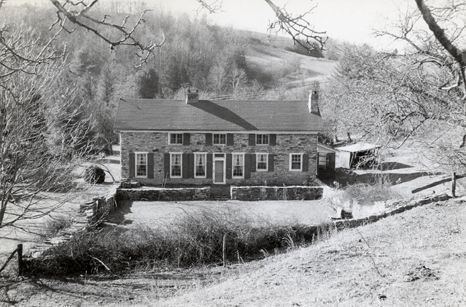Built 1925 (1925) NRHP Reference # 71000979 Designated NHL November 11, 1971 Area 31 ha | Architect William Spratling VLR # 038-0008 Opened 1925 Added to NRHP 22 September 1971 | |
 | ||
Location Near the junction of Ripshin and Laurel Creek Roads, near Troutdale, Virginia | ||
Ripshin Farm, also known as the Sherwood Anderson Farm is a historic farm property at the junction of Routes 603 and 732 near Troutdale, Virginia. It was developed as a summer home and later year-round home by writer Sherwood Anderson (1876-1941), and is where he wrote most of his later works. It was declared a National Historic Landmark in 1971.
Description and history
Ripshin Farm is located in a rural setting in Virginia's southwestern hills, east of the village of Troutdale. It is set on a rise overlooking the confluence of Ripshin and Lauren Creeks, and is accessed by a long drive on the east side of Route 603 north of its junction with Route 732. The property consists of 76 acres (31 ha), much of which is wooded, but with views cleared to the west. It includes the main house, two small guest cottages, and a log cabin in which Anderson did his writing. The main house is 1-1/2 stories in height, with a central section of fieldstone flanked by log wings.
The property was a small farm when Sherwood Anderson purchased it in 1925. He at first lived in a log cabin on the site, while the house was under construction. It would serve as his home and principal writing location until his death in 1941. Anderson was one of the first writers of his time to create candid depictions of the sometimes gritty aspects of life, and for his frankly self-revealing works. He was acknowledged as a major influence on a generation of writers, including William Faulkner, Stephen Vincent Benet, and Eudora Welty. It is here that his most popular work, Dark Laughter, was completed in 1925.
